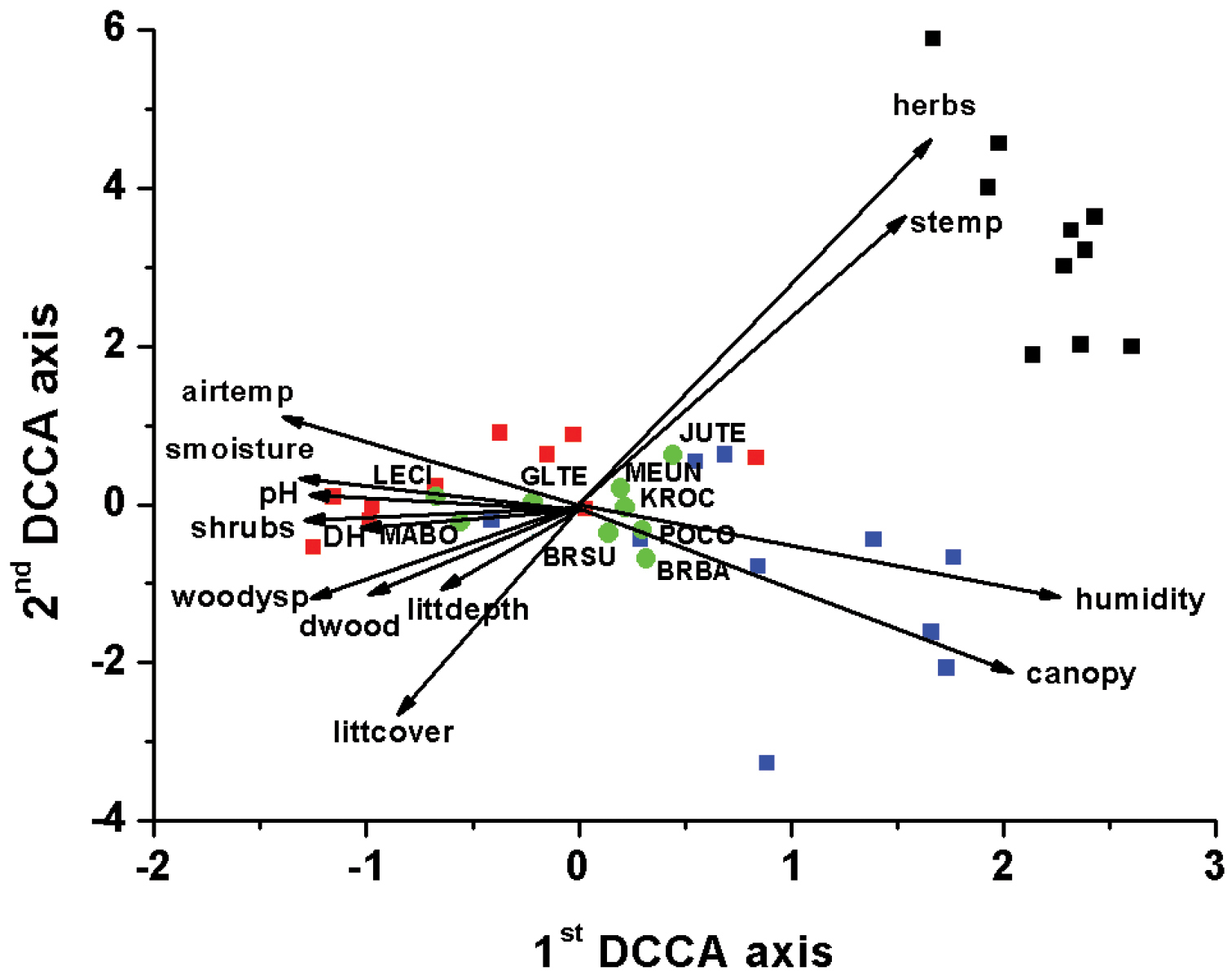
|
||
|
DCCA analysis for the millipede species of the study area. Squares represent the sampled habitats (blue squares: samples from the forest interior habitat; red squares: samples from the forest edge habitat; black squares: samples from the grassland habitat).The arrows denote the increase of the value of the environmental variables (airtemp: air temperature on the surface; canopy: canopy cover; DH: soil dehydrogenase enzyme activity; dwood: cover of decaying wood material; herbs: cover of herbs; littcover: cover of leaf litter; littdepth: depth of leaf litter; humidity: relative humidity on the surface; pH: soil pH; shrubs: cover of shrubs; stemp: soil temperature at 2cm depth; smoisture: soil moisture; woodysp: number of woody plant species). Green circles and the four-letter abbreviations indicate the millipede species (BRBA: B. bagnalli; BRSU: B. superus; GLTE: G. tetrasticha; JUTE: J. terrestris; KROC: K. occultus; LECI: L. cibdellus; MABO: M. bosniensis; MEUN: M. unilineatum; POCO: P. complanatus). |